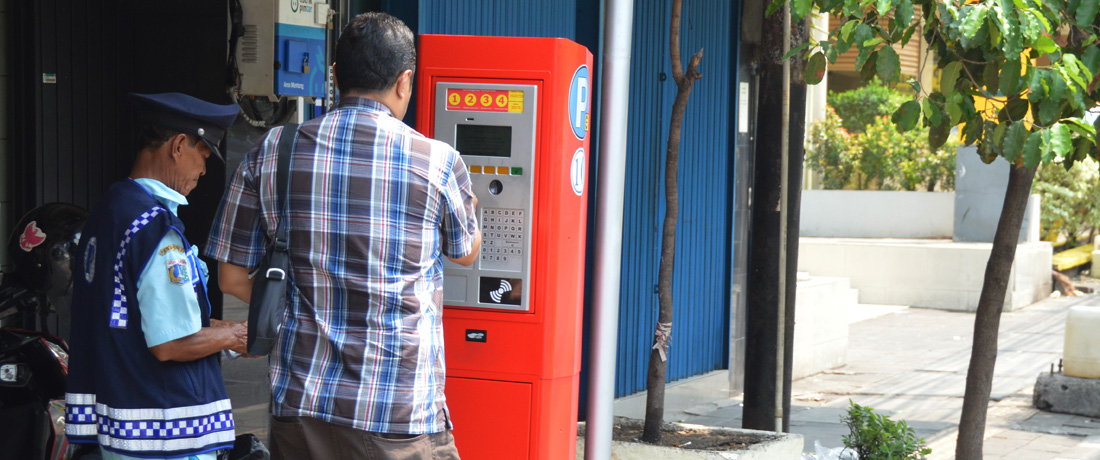
17 Nov Jakarta Terus (blog by Fridus Steijlen)
Suddenly there were parking meters on Jalan Sabang in the centre of Jakarta. I saw them after I checked into a hotel around the corner and went for dinner. A novelty in an Indonesian city where tukang parkir (parking men) dominate the streets, blowing their whistle to attract cars to empty spots and once again to guide you backwards out into the crowded streets yelling “Terus! Terus!” (go ahead, go ahead). They cost just 2.000 rupiah or maybe 3.000 on weekends and in fancy areas.
I knew the city of Jakarta was working on improving its traffic infrastructure. Pollution was to be beaten by bringing down carbon monoxide emissions. Very slowly the ‘smoking’ buses are disappearing from the streets, and some years ago I even saw a ‘green’ natural gas Bajai.
Raised highways, flyovers and what is known in Jakarta as “flyunders” have also been built to improve traffic streaming. On some “flyunders”, the angle from the ramp to the lower street forces drivers to briefly slow down. The so-called ‘non-toll highway’ – Antasari – is more like an extra layer of traffic in the city. It doubles the lanes vertically, creating a second floor of road, leaving the first floor without sun but with partial shelter from rain.
And of course there are improvements in public transport. Although much debated, the Trans-Jakarta Busway, operating since 2004, makes a difference. Drivers in the streets of Jakarta had to get used to the fact that they were not allowed on the Trans-Jakarta Bus lane; but slowly they seem to adapt. And then there is the ambition of an MRT, Mass Rapid Transport, for Jakarta, like Amsterdam’s Metro. After a few false starts, the construction of the first of two lines are finaly underway with a ceremony in October 2013, work expected to be completed on the first 15 km North-South line by 2018. Jakartans are confronted with large construction areas in the middle of their main roads, like when the non-toll highway was built. Last time, the walls protecting the highway construction were heavily illustrated with pictures of trees and nature, suggesting that the second layer of pavement was of ecological interest. This time, the walls of the metro construction are simple and plain: just grey with logos and renderings of the imagined Metro stations.
And now Jakarta is taking care of the parking problem. Last year, 14 tow trucks were bought to operate in five areas towing away illegally parked cars. A friend told me that, in some streets, banners warn drivers not to park or to park too long, otherwise their valves will be opened leaving them with flat tyres. The newest weapon in regulating parking is the parking meter, as I saw in Jalan Sabang. Parking there now costs 5.000 rupiah per hour. That is much more expensive than it was under the tukang parkir regime. The parking meters came to Jalan Sabang two months ago as a test, a taxi driver told me. They chose this street because it is known as a culinary hot spot to which people from all over the city come by car to dine. If the experiment is a success, another area will be created in the Ancol amusement park area in north Jakarta.
“But what about the tukang parkir?”, I asked the taxi driver while approaching my hotel. “They are now employed by the local government”, he explains. “The parking meters only accept coins. The tukang parkir now help the drivers to use the meter and change their paper money into coins”. When I leave the taxi, I hear the shrill whistle of the tukang parkir on Jalan Sabang. Thank goodness the parking meters have not yet replaced them in this fast-changing city.




No Comments